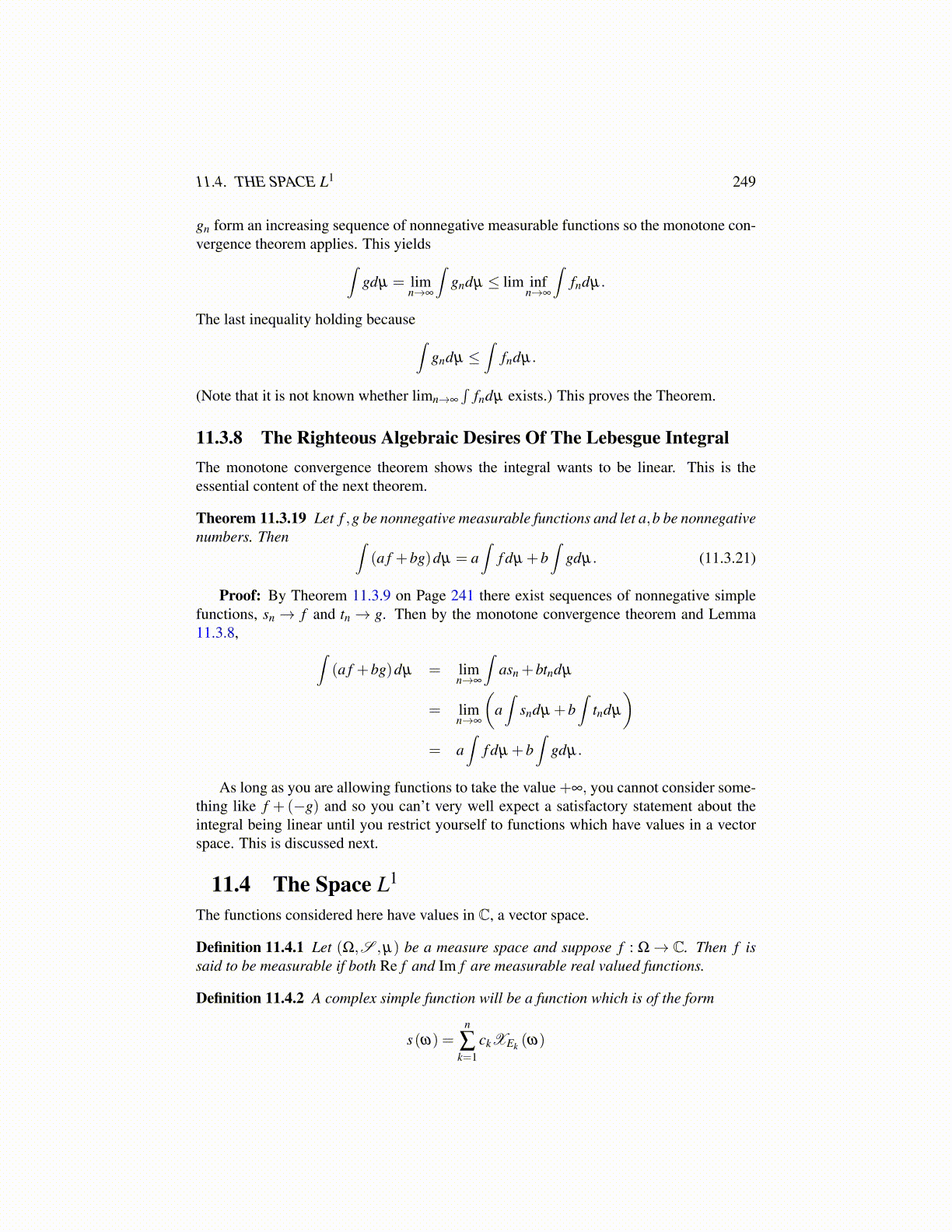
11.4. THE SPACE L1 249
gn form an increasing sequence of nonnegative measurable functions so the monotone con-vergence theorem applies. This yields∫
gdµ = limn→∞
∫gndµ ≤ lim inf
n→∞
∫fndµ.
The last inequality holding because∫gndµ ≤
∫fndµ.
(Note that it is not known whether limn→∞
∫fndµ exists.) This proves the Theorem.
11.3.8 The Righteous Algebraic Desires Of The Lebesgue IntegralThe monotone convergence theorem shows the integral wants to be linear. This is theessential content of the next theorem.
Theorem 11.3.19 Let f ,g be nonnegative measurable functions and let a,b be nonnegativenumbers. Then ∫
(a f +bg)dµ = a∫
f dµ +b∫
gdµ. (11.3.21)
Proof: By Theorem 11.3.9 on Page 241 there exist sequences of nonnegative simplefunctions, sn → f and tn → g. Then by the monotone convergence theorem and Lemma11.3.8, ∫
(a f +bg)dµ = limn→∞
∫asn +btndµ
= limn→∞
(a∫
sndµ +b∫
tndµ
)= a
∫f dµ +b
∫gdµ.
As long as you are allowing functions to take the value +∞, you cannot consider some-thing like f +(−g) and so you can’t very well expect a satisfactory statement about theintegral being linear until you restrict yourself to functions which have values in a vectorspace. This is discussed next.
11.4 The Space L1
The functions considered here have values in C, a vector space.
Definition 11.4.1 Let (Ω,S ,µ) be a measure space and suppose f : Ω→ C. Then f issaid to be measurable if both Re f and Im f are measurable real valued functions.
Definition 11.4.2 A complex simple function will be a function which is of the form
s(ω) =n
∑k=1
ckXEk (ω)